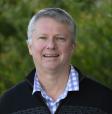The mechanical, electrical, chemical, optical and thermal properties of glass, as determined by its chemical composition and atomic structure, make it a highly useful material with a myriad of applications.
With enhanced submicron spatial resolution, speed and contrast, the Micro-Computed Tomography beamline opens a window on the micron-scale 3D structure of a wide range of samples relevant to many areas of science including life sciences, materials engineering, anthropology, palaeontology and geology. MCT will be able to undertake high-speed and high-throughput studies, as well as provide a range of phase-contrast imaging modalities.
The shutdown of a nuclear reactor can be done manually by an operator following a well-established operating procedure.
ANSTO recently re-started the OPAL Reactor after a six-month shutdown for essential maintenance and the installation of an upgraded facility.

Principal Research Scientist, Project Leader
Role at ANSTO

Analytical Experimental Officer
Role at ANSTO

Group Manager - Microscopy
Role at ANSTO
Highlights of the Energy Materials Project.

Senior Beamline Scientist (BioSAXS)
Role at ANSTO
The X-ray Fluorescence Nanoprobe beamline undertakes high-resolution X-ray microspectroscopy, elemental mapping and coherent diffraction imaging – providing a unique facility capable of spectroscopic and full-field imaging. Elemental mapping and XANES studies will be possible at sub-100 nm resolution, with structural features able to be studied down to 15 nm using scanning X-ray diffraction microscopy.

Earth Scientist/ Licenced Accelerator User
Role at ANSTO

Graduate Engineer
Sherry entered university, torn between the allure of science and the hands-on practicality of engineering. This lead her into the field of Material Science and Engineering.

Biologist
Role at ANSTO

Lead Scientist - Advanced Diffraction & Scattering beamlines
Role at ANSTO

Scientist - XAS
Role at ANSTO

Lead, Food Materials Science; Instrument Scientist, QUOKKA (Small-Angle Neutron Scattering); Honorary Professor, CNFS, The University of Queensland
Role at ANSTO
On average, there is now 17 per cent less rainfall across Western Australia’s south-western region than was recorded prior to 1970. This rainfall reduction has economic, social and environmental implications for the region, in particular for the growing capital of Perth, as well as water-dependent industries in the state.

Principal Research Scientist
Role at ANSTO
Archive of ANSTO research publications, seminars and short talks.
Pagination












